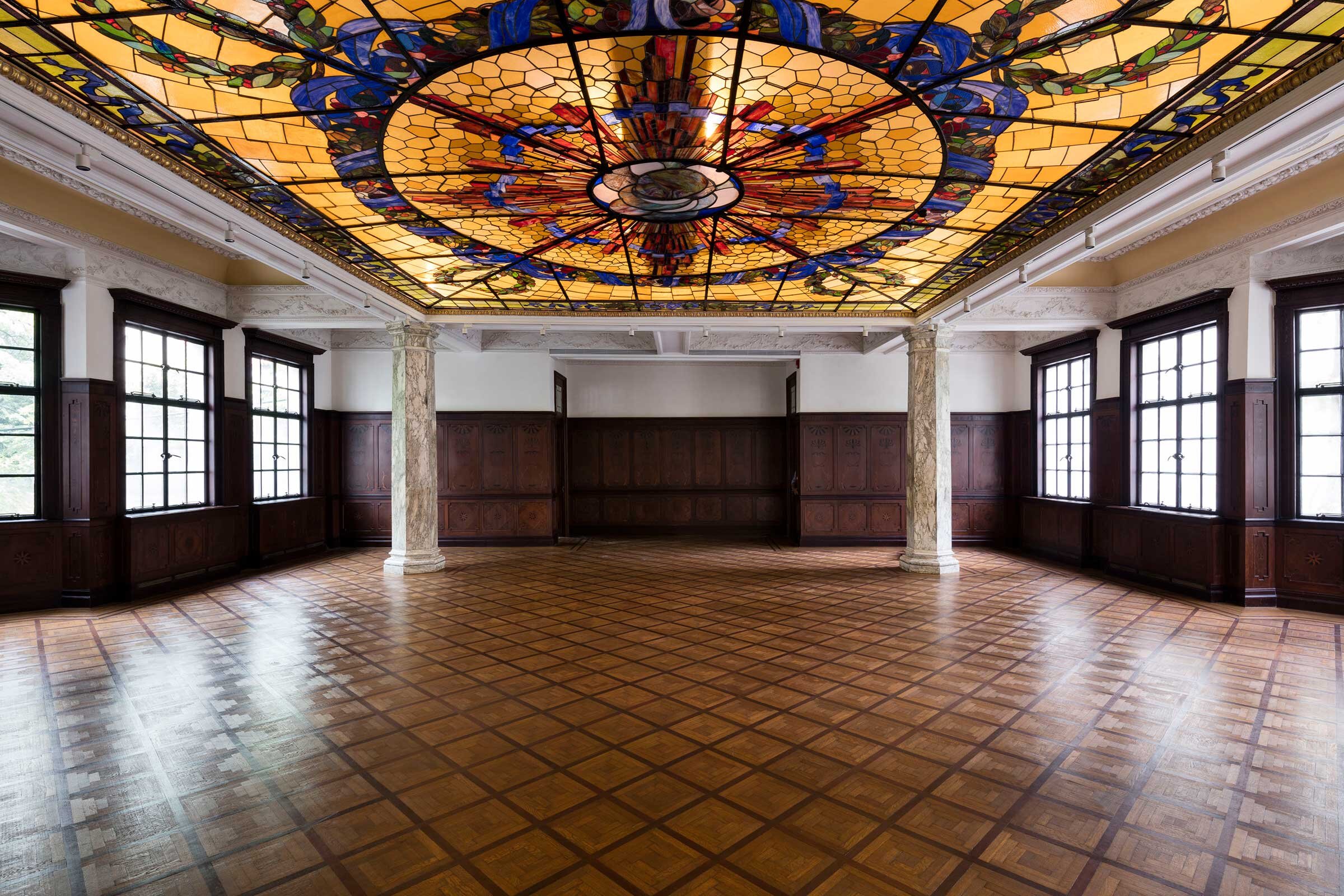Shanghai Darling: Inside Prada’s Rhong Zhai Villa

In 2018, Prada unveiled a new platform for the arts in an exquisite early 20th-century Shanghai villa, and Design Anthology took a look inside
Originally built in the early 20th century, Rhong Zhai Villa in Shanghai has been painstakingly restored by Prada to act as a culture house
Prada’s recent restoration of Rong Zhai villa in Shanghai is incredible. Officially unveiled late last year, the project is part of a broader trend that has seen a number of luxury fashion brands creating their own spaces for the promotion of art and culture. But while already- established examples, such as Fondation Louis Vuitton or even Fondation Cartier, have commissioned high-profile architects to design their buildings, Prada has adopted a distinctly different approach that involves the painstaking restoration of old and historically significant structures from the inside out.
Following its work on Galleria Vittorio Emanuele II — Italy’s oldest shopping mall situated in Milan — and Ca’ Corner della Regina, a 300-year-old palazzo located on Venice’s Grand Canal, Rong Zhai is Prada’s third major restoration initiative and its first outside Italy. The former mansion, constructed between 1899 and 1910, is described by Prada as ‘one of Shanghai’s finest Western-style garden villas’. Originally owned by a German expatriate, it was sold in 1918 to a self-made entrepreneur by the name of Yung Tsoong- king, who lived there with his family until the outbreak of the Second Sino-Japanese War.
Throughout the 1920s, the villa underwent extensive renovations under the supervision of local designer Chen Chunjiang, and visitors today will discover interiors that combine historicist revival styles with Art Deco embellishments. The cumulative impact is nothing short of stunning.
Characteristic of that era, the villa boasts expansive wooden detailing, with intricately carved panels throughout. In the meeting room, for example, a green ceramic-tiled fireplace is embedded in a solid teak surround decorated with neoclassical and chinoiserie-style elements that include human and animal figures. Staircases found in and across the building showcase a similar mix of styles, though it is their abstract lattice patterns — most probably inspired by ancient Chinese architecture — that catch the eye first.
These wood features required extensive repair work, since their surfaces had been covered with paint that obscured the tone and grain of the original teak wood, and provide an example of Prada’s dedication to the project. Restoration artisan Giovanni Rossi’s team stripped the layers of paint, exposing plywood used in earlier repairs. The team repaired damaged portions using similar woods of the appropriate age when possible, then hand-sanded the wooden surfaces, stained them with natural shellac and buffed them with multiple coats of beeswax to bring out the wood’s naturally velvety attributes.
The richness and depth of the material is balanced through the inclusion of bright and intricate tilework, and in one of the mansion’s more unusual rooms, known as the Lotus Bedroom, a calming pastel colour palette is unexpectedly paired with ornate enamel wall tiles in a delicate lotus flower pattern. Any damaged or missing tiles — both here and elsewhere — were replaced through a meticulous process of replicating the manufacturing techniques of the original enamel and encaustic tiles. Extensive testing was further required to achieve the exact colour, translucency and crackled effect of the original 100-year-old pieces. Altogether, around 1,600 damaged or missing tiles were eventually replaced for Prada Rong Zhai over the course of two years.
Another highlight of the residence is its stained- glass windows that combine classical elements with motifs from the Art Nouveau and Art Deco eras. One of the most prominent examples is a certain skylight in the home’s ballroom, composed of 69 panels. Central to the design of the piece is a geometric rosette surrounded by crystalline rays that emanate from a stylised sunburst, all contained by several swirling ribbons and laurel wreaths. A statement detail if ever there was one, the skylight has more recently served as the striking backdrop to the Prada 2018 Resort catwalk show.
While private platforms and collaborations in art and culture necessarily require a questioning of motive, there is, in the case of Rong Zhai, no question that a loving restoration has taken place.
Text / Zara Arshad
Images / Agostino Osio
The home’s interiors were meticulously restored through extensive repair work to its wooden detailing, enamel and encaustic tiles, and stained-glass windows











